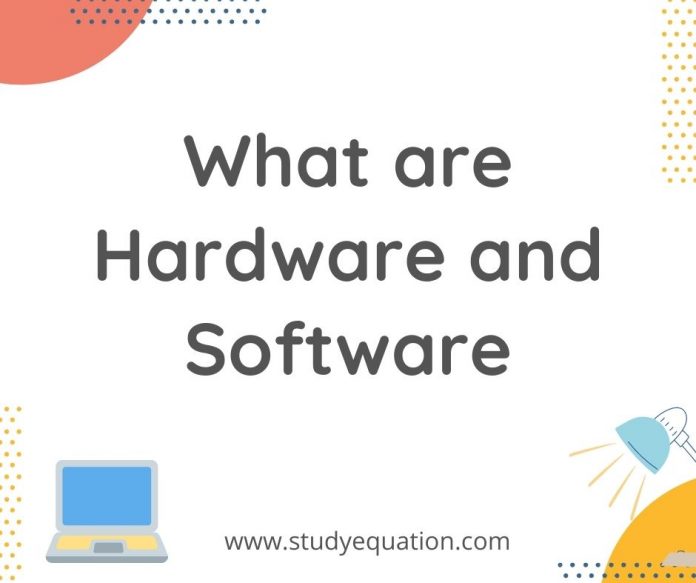Hardware and Software are important parts of the computer. Both are dependent on each other. Hardware is the part that can be mechanically seen but software is used inside the computer for the functioning of the hardware.
Let us learn more about hardware and software.
Table of Contents
Hardware and Software: Hardware
Hardware is the part of computer that comprises of the different physical parts of a computer, for example:
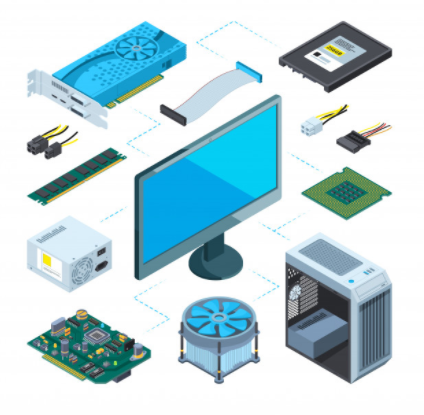
- Central processing unit (CPU)
- Power supply unit (PSU)
- Random-access memory (RAM)
- Motherboard
- Network card
- Graphics processing unit (GPU)
- Peripheral equipment
- Modem
- USB flash drive
- Computer monitor
- Hard drive
- Keyboard
- Computer mouse
Hardware is actually managed by the software to perform any act or command. An association of hardware and software forms a proper computing system, although various systems exist with only hardware.
Hardware and Software: Central processing unit (CPU)
A central processing unit (CPU) is a significant part of any computer. The CPU transmits signals to control the different parts of the computer, almost like how a brain controls a body.
The CPU is an electronic device that operates on a list of machine things to do, called instructions. It examines the list of instructions and commands each one in order. A program of directions that a CPU can control is a computer program.
The clock rate, or rate of a CPU’s interior parts, is estimated in hertz (Hz). Recent processors often run so fast that gigahertz (GHz) is used alternatively. One GHz is 1,000,000,000 cycles by second.
Maximum CPUs used in desktop computers are microprocessors made by either Intel or Advanced Micro Devices (AMD). ARM, IBM, and AMD under ATI Technologies, which is the leader right now are some other companies that make CPUs. Most of their CPUs are used in fixed systems for more specialized things, like in mobile phones, cars, game consoles, or in the military.
Also Read : History of Computers
Random-access memory (RAM)
Random-access memory (RAM) is the memory or data storage in a computer that is used to stock running programs and data for the programs. Data in the RAM can be learned and composed quickly in any order. Usually, the random access memory is in the style of computer chips. Normally, the contents of RAM are available quicker than different types of data storage but are lost each time the computer is turned off. Non-volatile random-access memory (NVRAM) stores its information without using energy, which is more costly but works slower, so it is used in fewer amounts.
Power supply unit (PSU)
The power supply unit is the part of the device that converts the energy provided from the outlet into useful power for the several parts inside the computer.
It converts the alternating current from the wall outlet into a constant form of power called direct current that the computer components need. It also controls overheating by controlling voltage, which might develop automatically or manually depending on the energy supply.
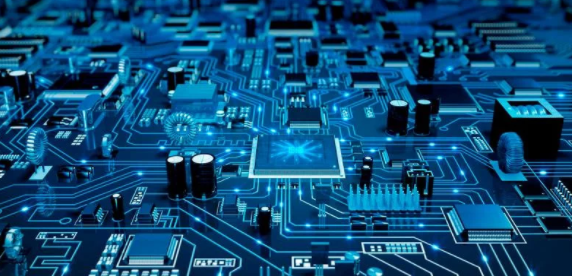
Motherboard
The motherboard or mainboard is the central circuit board in a complicated electronic system, like a computer. It is the most ‘fundamental’ part of a computer. All of the various parts of the computer are connected to the motherboard. This lets them work mutually. In most computers, the mainboard is a huge green board, but many come in different colours like black, red and yellow.
Graphics processing unit (GPU)
A graphics processing unit (GPU) is a unique, electronic circuit meant to quickly manipulate and alter memory to stimulate the building of pictures in a frame buffer intended for output to a display device. Firstly, GPUs are utilised in embedded systems, mobile phones, personal computers, workstations, and game consoles. Secondly, modern GPUs are very skilled in handling computer graphics and image processing. Their extremely parallel structure makes them more productive than general-purpose central processing units (CPUs) for algorithms that prepare large blocks of data in parallel. Above all in a personal computer, a GPU can be present on a video card or installed on the motherboard. In certain CPUs, they are implanted on the CPU.
Network card
Network cards let a computer interchange data with a network. To accomplish the connection, network cards use a fitting protocol, for example, CSMA/CD. Network cards usually perform the first two layers of the OSI model, that is the physical layer and the data link layer. However most network cards today use the Ethernet.
Peripheral equipment
A peripheral device is commonly defined as any accessory device such as a computer mouse or keyboard, that attaches to and works with the computer in any way. Subsequently, other examples of peripherals are expansion cards, graphics cards, tape drives, microphones, loudspeakers, webcams.
Hardware and Software: Software
Software is the directions that tell a computer what to do. Therefore, the software includes the entire set of programs, methods, and methods associated with the performance of a computer system. The term was issued to modify these instructions from hardware— i.e., the mechanical components of a computer system. Meanwhile, a set of instructions that guides a computer’s hardware to complete a task is called a software program.
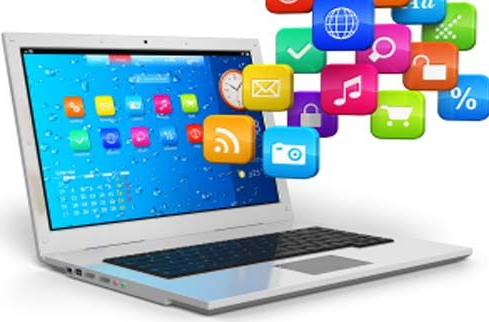
There are four types of sources:
- Application Software
- System Software
- Programming Software
- Driver Software
Hardware and Software: 1. Application Software
The application software is separate from system software, which leads to the software that actually manages the systems running such as the operating system, computational science software, and software as a service application.
Application software, or app is the software that does specific tasks for an end-user.
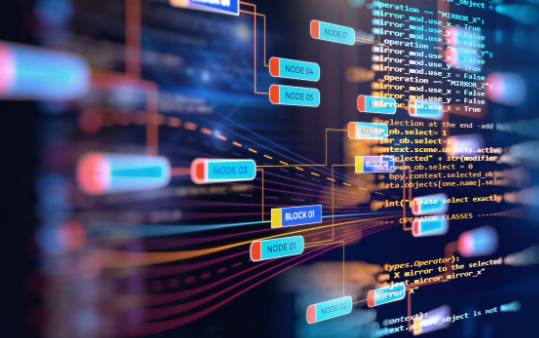
2. System Software
The system software is a variety of computer program that is intended to run a computer’s hardware. However, if we think of the computer system as a layered model, the system software is the interface within the hardware and applications. Likewise, the operating system (OS) is an excellent example of system software. Therefore the OS manages all the different programs on a computer.
3. Programming Software
Programming software is a software which helps the programmer in improving other software. Similarly, the programming software is a program or collection of programs which serves the software developers by assisting them in debugging and maintaining other programs and applications.
4. Driver Software
A driver in software gives a programming interface to guide and manage particular lower-level interface that is often linked to a particular type of hardware. In the case of hardware, the particular subclass of drivers managing physical or virtual hardware devices is known as device drivers.
Hardware and Software: Conclusion
These are the basic parts of Hardware and Software that we need to learn. We will learn more deeply in higher classes about different types of software and hardware. In conclusion Hardware and Software make up the whole computer functional. Therefore it is hard to use a computer without any one of them.

